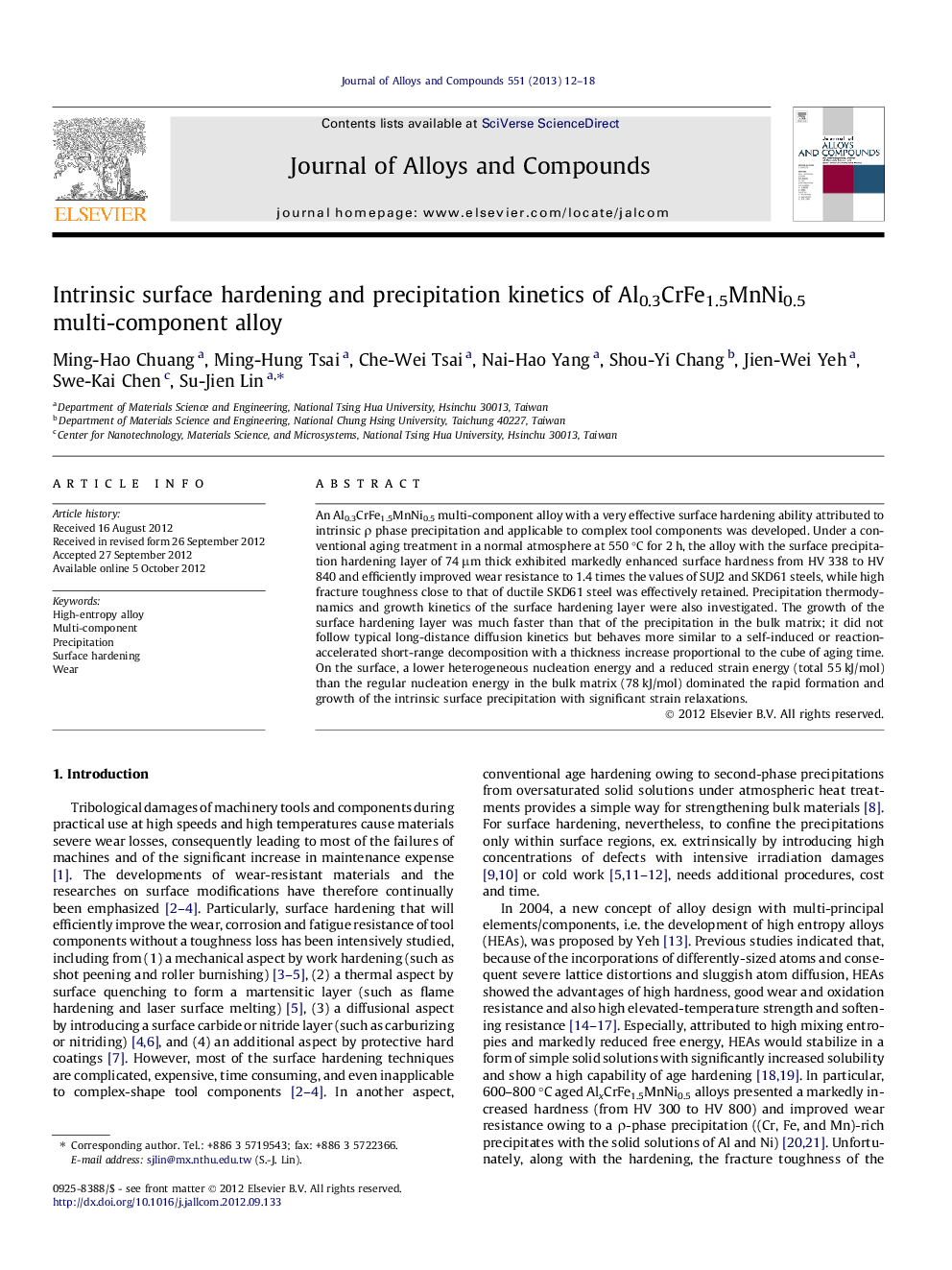| Article ID | Journal | Published Year | Pages | File Type |
|---|---|---|---|---|
| 1614941 | Journal of Alloys and Compounds | 2013 | 7 Pages |
An Al0.3CrFe1.5MnNi0.5 multi-component alloy with a very effective surface hardening ability attributed to intrinsic ρ phase precipitation and applicable to complex tool components was developed. Under a conventional aging treatment in a normal atmosphere at 550 °C for 2 h, the alloy with the surface precipitation hardening layer of 74 μm thick exhibited markedly enhanced surface hardness from HV 338 to HV 840 and efficiently improved wear resistance to 1.4 times the values of SUJ2 and SKD61 steels, while high fracture toughness close to that of ductile SKD61 steel was effectively retained. Precipitation thermodynamics and growth kinetics of the surface hardening layer were also investigated. The growth of the surface hardening layer was much faster than that of the precipitation in the bulk matrix; it did not follow typical long-distance diffusion kinetics but behaves more similar to a self-induced or reaction-accelerated short-range decomposition with a thickness increase proportional to the cube of aging time. On the surface, a lower heterogeneous nucleation energy and a reduced strain energy (total 55 kJ/mol) than the regular nucleation energy in the bulk matrix (78 kJ/mol) dominated the rapid formation and growth of the intrinsic surface precipitation with significant strain relaxations.
Graphical abstractFigure optionsDownload full-size imageDownload as PowerPoint slideHighlights► Al0.3CrFe1.5MnNi0.5 multi-component alloy with surface hardening was developed. ► By simple aging treatments, the surface hardness was markedly enhanced. ► Wear resistance was efficiently improved, and fracture toughness retained. ► The intrinsic surface hardening behaves similar to short-range decomposition. ► The intrinsic surface hardening has relatively low heterogeneous nucleation energy.
